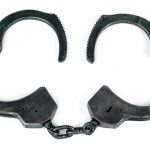Police Misconduct Puts Innocent Man Behind Bars

Everyone makes mistakes from time to time – but some errors have far greater consequences than others.
Like, for instance, the blunder by Western Australian Police, who found a crucial piece of evidence in their own possession many years after they thought it had been lost.
A Bungled Investigation
The item, a wooden stick with a blue weight attached to it, was used in the murder of two women, Brigetta Dickens and Pamela Lawrence, in 1994.
Simon Rochford was convicted of murder and sentenced to 15 years imprisonment for the murder of Ms Dickens – but the police investigation failed to examine crucial pieces of evidence, which led to British-born Andrew Mallard being wrongfully convicted for her murder and sentenced to life imprisonment in 1995. Mallard spent 12 years behind bars before his conviction was overturned by the High Court in 2006 when police conducted a review of the incident, linking Simon Rochford to the killing.
But the disaster – which saw an innocent man spend over a decade behind bars – could have been avoided entirely if police had not made a myriad of mistakes; most significantly, misplacing the weapon that was used in both killings.
The Great Mistake
A cold case review which began in 2006 centred on a handprint that was found at the scene of the crime which matched that of Simon Rochford.
Forensic examination revealed that Ms Lawrence was beaten to death by a weapon which matched the dimensions and weight of the wooden stick – but at the time of the review the weapon was widely believed to have been lost or destroyed; leaving examiners to cross-check the wounds against a photograph and dimensions of the lost weapon. Paint fragments found in Ms Lawrence’s wounds were also identical in composition to flakes found in Mr Rochford’s rucksack which were believed to have originated from the weapon.
In 2007, Western Australian Police told the Corruption and Crime Commission that they could not locate the murder weapon in police exhibits and evidence, and falsely claimed that it had been destroyed pursuant to a court order following Mr Rochford’s trial.
But it was revealed this week that the weapon was uncovered during an audit of exhibits in 2013.
After its discovery, an analysis of the weapon confirmed that it indeed matched the paint fragments located in Mr Rochford’s backpack and in Ms Lawrence’s wounds.
The revelation has left many wondering whether the weapon’s mysterious disappearance was really just an innocent mistake – or whether it was actually part of a police ‘cover-up’.
It adds to a growing list of problems with the way the investigation into Ms Lawrence’s death was conducted, with experts saying that it is a sign of police incompetence.
Prosecution Misconduct Leads to Wrongful Conviction
Andrew Mallard was convicted of the murder despite a complete lack of evidence against him.
There was no blood found on him, and no murder weapon was identified at the time of his trial. Mallard had no history of violence, and no DNA evidence was ever produced linking him to the crime.
Despite this, police and the DPP proceeded on the basis of a police interview, in which Mallard had allegedly suggested how Lawrence may have been killed after police fed him with information about the incident. On top of this, the prosecution relied on unsigned police notes which claimed that Mallard had made admissions, which Mallard vehemently denied.
The prosecution case relied almost entirely upon Mallard’s speculation about the possible manner of Lawrence’s death and the unsigned police notes.
Thankfully, Mallard’s family remained convinced of his innocence, and enlisted the assistance of an investigative journalist and two barristers to look into the case. They discovered that the police had failed to pass on critical information contained in police and forensic reports to the defence team – but despite this, the Court of Criminal Appeal found against Mr Mallard. It was only after Mallard appealed to the High Court that he was finally released from prison.
A CCC investigation revealed that there had been extensive misconduct by WA Police during the initial investigation, and recommended 14 adverse findings against the two policemen who had handled the matter; finding that they had changed witness statements to increase the chances of a conviction against Mallard.
Ken Bates, the deputy DPP lawyer who ran the trial, was also issued with 13 adverse findings for failing to disclose key evidence to the defence.
Mallard was finally offered a compensation payment of $3.25 million by the state, but this provides little relief to the man who spent 12 years in prison for a crime he did not commit.
Besides wrongfully imprisoning an innocent man and costing taxpayers millions of dollars, the misconduct of police denied justice to Ms Lawrence’s family.
The true killer, Simon Rochford, avoided prosecution for the crime, and committed suicide in his cell in 2006 after police named him as the prime suspect.
Although he was already serving a lengthy prison sentence at that time, he never stood trial for Ms Lawrence’s murder – and was therefore never convicted or sentenced for the crime.
The incident has caused Shadow Attorney-General John Quigley to question why it took so long for Police to make their “re-discovery” of the weapon public knowledge.
Despite its far reaching implications, Police Minister Liza Harvey has refused to comment about the incident.






